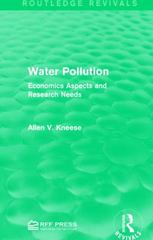Please see the attached and answer the following:
They are the topic related to IS/LM model.
Thanks so much!!
2. The Determination of Interest Rate Revisited In the textbook model with commercial banks, we assume that people only hold checkable deposits. Now we relax this assumption and allow people to hold both currency and checkable deposits. This exercise walks you through the determination of interest rate in the more general setting. Assume that overall money demand is given by the same equation as before: Md = $YL(i) Denote the demand for currency by C U '1 and the demand for checkable deposits by Dd. Assume people hold a xed proportion, c, of their money in currency and the rest of their money in checkable deposites. (a) Write down C U '1 and D'1 in terms of overall money demand. The demand for ch eckable deposits lead to a demand by commercial banks for reserves, the second component of the demand for central bank money. Let 9 be the required reserve ratio and Rd be the demand for reserves by commercial banks. (b) Write down Rd in terms of overall money demand. (e) Let Hd be the demand for central bank money. Write down Hd in terms of overall money demand. ((1) Let H be the supply of central bank money. Write down the equilibrium condition for the market of central bank money. From now on, suppose 6 = 0.1. (e) Consider that people hold only currency, i.e. c = 1. In equilibrium, how much is total supply of central bank money as a fraction of overall money demand? (i) Consider that people hold only checable deposites, i.e. c = 0. In equilibrium, how much is total supply of central bank money as a fraction of overall money demand? (g) Compare your answers in (e) and (t), what do you nd out? 3. A Policy Mix in The IS-LM Model When you draw a diagram below, label all curves, lines, axes, and relevant points clearly. (a) Draw an IS-LM diagram. Denote the point representing the current economic situation as point A. (b) Now, the government raises '1" to reduce the primary budget decit without affecting G. Explain any changes in the diagram. Show the new equilibrium and label it as point B. (c) Given the scal policy in (b), if the central bank wants to stabilize output, what should it do in the open market? Explain your answer and show any changes graphically. The new equilibrium with the intervention from the central bank should be labeled as point C. (d) Draw a money market diagram for points A and C. It should include real money supply and demand curves corresponding to each point A and C in the IS-LM diagram. If any curve shifts between points A and C, clearly illustrate that. Show the corresponding equilibrium interest rate as iA and ic. . (Blanchard 8th, #5 on p. 124.) Consider the following numerical example of the ISLM model: C = 100 + 0.3YD I = 150 + 0.2Y 1000i T = 100 G = 200 f: 0.01 Md ? = ZY 4-0001 (a) Find the equation for aggregate demand (Z). (b) Derive the IS relation (HINT: You want an equation with Y on the left side, all else on the right.) (c) Derive the LM relation if the central bank sets an interest rate of 1%. (d) Solve for the equilibrium values of output, interest rate, C and 1. Verify the value you obtained for Y by adding up C, I , and G. (e) Compute Mg that supports 1' = ias an equilibrium in the money market, given the equilibrium value of Y. (i) Contractionary monetary policy. Suppose that the central bank wants to increase 3 by 1 percentage point (i.e., the new i = 0.02). What is the impact of this contractionary monetary policy on the IS and LM curves? Find the new equilibrium values of output, interest rate, C and I. To which value the central bank should change the real money supply to make this equilibrium happen? (g) Expansionary scal policy. Suppose for now that f = 0.01 and M; is given by the value you derive in (e). Suppose that the government increases its spending G to 300. What is the impact of the expansionary scal policy on the IS and LM curves? Find the new equilibrium values of output, interest rate, C and I . To which value the central bank should change the real money supply to make this equilibrium happen? What is the value of the associated government spending multiplier









